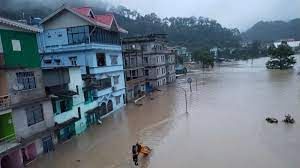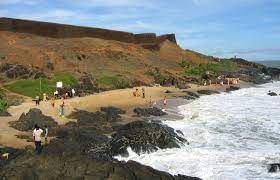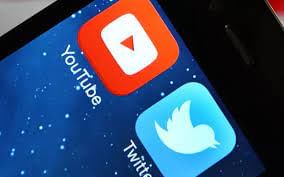UPSC Daily Current Affairs- 8th October 2023 | Current Affairs & Hindu Analysis: Daily, Weekly & Monthly PDF Download
| Table of contents |

|
| Glacial Lake Outburst Flood in Sikkim |

|
| Bekal Fort |

|
| 2023 Nobel Peace Prize |

|
| Child sexual abuse material (CSAM) on Social Media |

|
| State of Global Internet Freedom in 2023 |

|
| PUSA-44 |

|
GS-I
Glacial Lake Outburst Flood in Sikkim
Subject: Geography

Why in News?
Sikkim recently experienced a Glacial Lake Outburst Flood (GLOF). The South Lhonak Lake, a glacial lake located at an altitude of 17,000 feet in the state's northwest, experienced a rupture as a result of continuous rainfall.
- Consequently, water was discharged into the downstream regions, causing flooding in the Teesta River and impacting four districts of Sikkim: Mangan, Gangtok, Pakyong, and Namchi, as reported by the Sikkim State Disaster Management Authority (SSDMA).
- This flooding also caused the Chungthang Hydro-Dam in Sikkim (on Teesta river) to breach, worsening the overall situation.
What is Glacial Lake Outburst Flood?
- About:
- A GLOF (Glacial Lake Outburst Flood) is a sudden and potentially catastrophic flood that occurs when water stored behind a glacier or a moraine (a natural accumulation of ice, sand, pebbles, and debris) is released rapidly.
- These floods happen when glacial lakes formed by melting ice accumulate water behind weak moraine dams.
- Unlike sturdy earthen dams, these moraine dams can fail abruptly, releasing large volumes of water in minutes to days, leading to devastating downstream flooding.
- The Himalayan terrain, with its steep mountains, is particularly vulnerable to GLOFs.
- Climate change, accompanied by rising global temperatures, has expedited the process of glacier melting in the Sikkim Himalayas.
- The region now boasts more than 300 glacial lakes, with ten identified as susceptible to outburst floods.
- GLOF can be triggered by several reasons, including earthquakes, extremely heavy rains and ice avalanches.
- Impact:
- GLOFs can result in catastrophic downstream flooding. They have the potential to release millions of cubic meters of water in a short period of time.
- Peak flows during GLOFs have been recorded as high as 15,000 cubic meters per second (as per National Disaster Management Authority).
How Susceptible is South Lhonak Lake to GLOFs?
- The South Lhonak lake in northern Sikkim is situated about 5,200 meters above sea level.
- Scientists have previously warned that the lake had been expanding over years, possibly from the melting of the ice at its head.
- Notably, seismic activities, including a 2011 magnitude 6.9 earthquake, escalated the GLOF risk in the area.
- In 2016, the Sikkim State Disaster Management Authority and other stakeholders launched a critical plan to drain excess water from South Lhonak Lake.
- Visionary innovator Sonam Wangchuk led the effort, employing High Density Polyethylene (HDPE) pipes to siphon off water from the lake.
- This initiative successfully reduced the lake's water volume by approximately 50%, mitigating the risk to some extent.
- However, the recent tragedy is believed to be caused by an avalanche originating from the ice-capped feature surrounding the lake.
What Actions be Taken to Reduce the Risk of GLOFs?
- Glacial Lake Monitoring: Establishing a comprehensive monitoring system to track the growth and stability of glacial lakes in vulnerable regions.
- Satellite imagery, remote sensing technology, and field surveys through drones can be used to regularly assess changes in glacial lakes and their associated moraine dams.
- Early Warning Systems: and early warning systems that can provide timely alerts to downstream communities in the event of a GLOF.
- Also, there is a need to complement it with flood protection measures, such as constructing protective barriers, levees, or diversion channels to redirect floodwaters away from populated areas.
- Public Awareness and Education: There is a need to raise public awareness about the risks of GLOFs and educate communities living downstream about evacuation procedures and safety measures, as per NDMA’s guidelines related to GLOF.
- Conduct drills and training programs to ensure that residents know how to respond in case of a GLOF.
- International Cooperation: India can collaborate with neighboring countries in the Himalayan region, as GLOFs can have transboundary impacts.
- Sharing information and best practices for GLOF risk reduction and management with neighboring countries can help to mitigate the risk.
Source: Indian Express
Bekal Fort
Subject: History and Culture

Why in News?
The first public sector caravan park in Kerala to come up at Bekal fort of Kerala.
- It is exquisitely designed and built with dark maroon laterite stones.
- It is the largest and best preserved Fort in the whole of Kerala.
- The fort is endowed with impressive walls and ramparts which are again interrupted by massive bastions.
- While the bastions are equipped with several large and small openings for guns, the walls are interspersed with windows and peepholes. These were used to spot the enemy from afar in the past
- A unique and eye-catching feature is a lone bastion, projecting out into the sea.
- It was built in the 17th century.
- This historic monument offers a superb view of the Arabian Sea from its tall observation towers, which were occupied by gigantic cannons till afew centuries ago.
- Originally constructed by the rulers of the ancient Kadampa Dynasty, the Fort changed hands over the years to the Kolathiri Rajas, the Vijayanagara Empire, Tipu Sultan and finally, the British East India Company.
Source: The Hindu
2023 Nobel Peace Prize
Subject: Literature

Why in News?
The Norwegian Nobel Committee has awarded Iranian activist Narges Mohammadi the 2023 Nobel Prize for Peace.
- She has been awarded “For her fight against the oppression of women in Iran and her fight to promote human rights and freedom for all”.
- The Committee also referred to last year’s protests in Iran against the killing of a young woman named Mahsa Amini while she was in the custody of Iran’s morality police.
- The Nobel Peace Prize is one of the original five Nobel Prizes established by the will of Swedish industrialist Alfred Nobel, along with the prizes in Chemistry, Physics, Physiology or Medicine and Literature. It was first awarded in 1901.
- The Peace Prize is the only Nobel Prize not presented in Stockholm (in Sweeden). The recipient is selected by the Norwegian Nobel Committee, a five-member committee appointed by the Parliament of Norway. Since, 2020 the prize will be awarded in the University of Oslo.
- Mother Teresa (1979): She was a Catholic nun and the founder of the Missionaries of Charity. She was born in Skopje (in North Macedonia) and later to India, where she lived most of her life.
- Kailash Satyarthi (2014): He is a social reformer who campaigned against child labor in India and advocated the universal right to education. He is the founder of multiple social activist organizations, including Bachpan Bachao Andolan.
Source: The Hindu
GS-II
Child sexual abuse material (CSAM) on Social Media
Subject: Polity

Why in News?
YouTube, Telegram and X (Twitter) have been told to proactively filter child sexual abuse material (CSAM) out “on the Indian Internet” by the Ministry of Electronics and Information Technology recently.
- The notices to the platforms says, they would lose intermediary liability protections if they didn’t take action, meaning that the companies would themselves be open to legal action alongside users who posted CSAM.
Child sexual abuse material (CSAM):
- Child sexual abuse material (child pornography ) refers to any content that depicts sexually explicit activities involving a child.
- Due to rapid technological changes, online child sexual exploitation offenses are increasing in scale and complexity.
- Modern smartphones are the ideal child exploitation tool for offenders, as they can be used to photograph, record, or watch live child sexual abuse; store or access CSAM stored remotely; connect with victims and other offenders; and distribute and receive CSAM.
- The market for CSAM among individuals with a sexual interest in children drives the demand for new and more egregious images and videos.
- The production of CSAM creates a permanent record of the child’s victimization.
Effects of child sexual abuse materials:
Children shown in CSAM are victimized twice: first by the person committing the sexual abuse, and again by those who view it. It affects differently for different childrens.
- Guilt, shame, and blame: Survivors might feel guilty about not having been able to stop the abuse, or even blame themselves if they experienced physical pleasure.
- Intimacy and relationships: It’s possible that first experiences with sex came as a result of sexual abuse. As an adult, intimacy might be a struggle at times. Some survivors experience flashbacks or painful memories while engaging in sexual activity.
- Self-esteem: Survivors may struggle with low self-esteem, which can be a result of the negative messages received from abusers, and from having personal safety violated or ignored.
- Low self-esteem can affect many different areas of a survivor’s life such as in relationships, in careers, and even in a survivor’s overall health.
- Post-traumatic stress disorder: It’s normal for survivors of sexual violence to experience feelings of anxiety, stress, or fear. If these feelings become severe, it might be a condition known as post-traumatic stress disorder (PTSD).
- Substance and alcohol abuse: It’s possible for survivors to grow up and rely on alcohol and substances to cope and it can begin in early adolescent years and can last throughout adulthood.
Keeping children safe on the internet:
- Protect identity. Avoid sharing personally-identifying information about oneself and loved ones through social networks. Doing so can lead to unwanted attention and harassment.
- Report inappropriate images. If you receive or view inappropriate or sexual images through text message or online, report it to police or Use a secure Internet connection.
- Be mindful of privacy settings. Check privacy settings, such as location services and contact information, when using social media. Be aware that making data publicly available means anyone can see it.
- Be watchful of physical, behavioral, and emotional signs: To keep an eye on sudden changes in behavior. If a child tells you that someone makes them uncomfortable, even if they can’t say anything specific, listen to them carefully.
- Talk with kids. Help children set up social media accounts. Laying the groundwork for open communication can encourage your child to share about any unusual online conversations or activities down the road.
Source: The Hindu
State of Global Internet Freedom in 2023
Subject: Polity

Why in News?
According to a report by Freedom House (a Washington DC-based non-profit) on the state of Global Internet Freedom in 2023, there is a concerning trend of declining Internet freedom for the 13th consecutive year, with 29 countries experiencing a deterioration in the environment for human rights online.
- The report covers developments between June 2022 and May 2023. It evaluates Internet freedom in 70 countries, accounting for 88% of the world’s Internet users
- The report evaluates countries based on five censorship methods, including Internet connectivity restrictions, blocks on social media platforms, website blocks, VPN blocks, and forced removal of content.
What are the Key Highlights of the Report?
- Role of AI in Digital Repression:
- Artificial intelligence (AI) plays a critical role in digital repression. AI-based tools are increasingly sophisticated and accessible, being utilized to spread disinformation in at least 16 countries.
- Additionally, AI enhances content censorship efficiency in 22 countries by automating the removal of content deemed unacceptable for political, social, or religious reasons.
- Artificial intelligence (AI) plays a critical role in digital repression. AI-based tools are increasingly sophisticated and accessible, being utilized to spread disinformation in at least 16 countries.
- Legal Repercussions and Violence for Online Expression:
- A record high of 55 out of the 70 assessed countries witnessed legal repercussions for online expression.
- Moreover, in 41 countries, individuals were assaulted or killed due to their online statements.
- Country-Specific Findings:
- Iran witnessed a sharp rise in digital repression due to Internet shutdowns, blocking of social media platforms, and increased surveillance to suppress anti-government protests.
- China remained the worst country for Internet freedom for the ninth consecutive year, followed by Myanmar as the second most repressive country for online freedom.
- India's AI-Enabled Digital Repression:
- India has incorporated AI-based censorship into its legal framework, impacting freedom of expression and criticism of the ruling party.
- The report warns about adverse repercussions for Indian democracy due to the expanding censorship regime, creating an uneven playing field as the country prepares for general elections in 2024.
- India has incorporated AI-based censorship into its legal framework, impacting freedom of expression and criticism of the ruling party.
What is Censorship?
- Censorship is the act of suppressing or controlling information, ideas, or expression that are deemed objectionable, harmful, sensitive, or threatening to a particular group, organization, or government.
- It involves restricting or prohibiting the dissemination, publication, or access to certain content, either by individuals, institutions, or authorities.
- In India, censorship laws take everything that comes in public domain – advertisements, theatre, films, series, music, speeches, reports, debates, magazines, newspapers, plays, any form of art, dance, literature, written, documentary or oral works – in their sweep.
How does Censorship Work in India?
- Code of Criminal Procedure (Cr.P.C):
- Section 95 of the Cr.P.C allows forfeiture of certain content/ publications.
- It is punishable by the State Government via an official notification under this section if any newspaper, book, or document, wherever printed, contains any matter that the State Government considers harmful to the state.
- Section 95 of the Cr.P.C allows forfeiture of certain content/ publications.
- CBFC:
- The Central Bureau of Film Certification (CBFC) is a statutory body operational under the Cinematograph Act, 1952.
- It regulates the content of films that are brought into the public domain.
- The CBFC follows a system of prior certification of films and the broadcasters are bound by the guidelines under the 'Programme Code and Advertisement Code' to follow the certification provided.
- Press Council of India:
- It is a statutory and quasi-judicial body which was established under the Press Council Act, 1978.
- It acts as the self-regulatory body for the press and regulates what comes to the media domain.
- This body emphasizes the need for media persons and journalists to self-regulate, and acts as a watchdog for media content at large to assess if it goes against press ethics and the public interest.
- The Cable Television Networks Act, 1995:
- This act also filters the kind of content that can be broadcasted.
- For keeping a track over cable operators, the act mandates a compulsory registration for cable operators.
- Social Media Platforms and the New IT Rules, 2021:
- Given the significant rate of growth of social media, its censorship has been a growing point of concern in India as till recent times, it was not under the direct supervision of any government authority or direct and specific regulation thus far.
- At present, the Information and Technology Act, 2000 regulates social media usage, and Sections 67A, 67B, 67C and 69A, in particular, include the specific regulatory clauses.
- IT (Intermediary Guidelines & Digital Media Ethics Code) Rules, 2021:
- These were preceded by the amendments to the 'Allocation of Business Rules' under the IT Act, 2000 to bring films, audio-visual programmes, news, current affairs content, and digital and online media including OTT (Over The Top) platforms like Amazon, Netflix, and Hotstar under the purview of Ministry of Information & Broadcasting (I&B), Government of India.
What are the Advantages and Limitations of Censorship?
- Advantages:
- Censorship Prevents Disharmony: Censorship prevents disharmony in society by prevention of disclosure of objectionable content that can lead to communal discord.
- Preserves the Security of the State: The censorship of the internet can help to protect social stability and national safety.
- Since internet censorship can help to curb the large number of illegal activities and internet crimes, it is good for the stability of society.
- Some illegal organizations or people may release black information which will disturb the national economy and polity.
- Since internet censorship can help to curb the large number of illegal activities and internet crimes, it is good for the stability of society.
- Prohibits the Spread of False Beliefs or Rumours: Government can use the Censorship for prohibiting the spread of false beliefs or rumours and can also be used to curb access to Harmful Activities by preventing their public display and others.
- The censorship of internet can filter the inappropriate information online and protect children from disturbing websites, such as, child pornography, sexual violence and detailed instructions in crime or drug use.
- Limitations:
- Tool for Moral Policing: The practical application of the censorship legislation can end up becoming a tool of moral policing that controls other people's lives rather than concerning itself with larger public issues.
- The wide-ranging powers given to the regulatory body under the new rules, which is composed of bureaucrats, also runs the risk of discretionary political control.
- Against the Constitutional Mandate of Free Speech: The circumferences of morality, taste, and distaste differ widely in India.
- Hence, this level of intense censorship is far off-course from the constitutional mandate of free speech and expression as guaranteed to all Indian citizens (subject to certain reasonable restrictions).
- Tool for Moral Policing: The practical application of the censorship legislation can end up becoming a tool of moral policing that controls other people's lives rather than concerning itself with larger public issues.
Way Forward
- There need to safeguard freedom of speech and expression through strong legal and regulatory safeguards for digital communications and access to information.
- It is important that an appropriate regulation of AI is there in order to ensure that it is used to bolster internet freedom and not suppress it.
Source: The Hindu
GS-III
PUSA-44
Subject: Agriculture

Why in News?
Recently, Punjab Chief Minister announced that the state will ban the cultivation of the PUSA-44 paddy variety from next year onwards.
- It is a paddy variety which was developed in 1993 by the Indian Council of Agricultural Research (ICAR).
- By the end of 2010s, it had gained widespread popularity among farmers across the Punjab, covering approximately 70 to 80% of the area under paddy cultivation.
- Farmers claim that PUSA-44 yields nearly 85 to 100 mann (34 to 40 quintals) per acre, while other varieties’ yield average is 28 to 30 quintals per acre.
- Concerns
- It is a long-duration variety, taking around 160 days to mature.
- This is around 35 to 40 days more than other varieties, requiring 5-6 extra cycles of irrigation.
- With Punjab facing severe groundwater depletion and the availability of short-duration paddy varieties, the government aims to conserve one month of irrigation water by banning the variety.
- Moreover, this variety is also known to exacerbate the long-running issue of stubble burning in the state.
- This variety generates around 2 per cent more stubble than short varieties, which becomes a significant concern when cultivated on a large scale.
- It is an autonomous organisation under the Department of Agricultural Research and Education (DARE), Ministry of Agriculture and Farmers Welfare , Government of India.
- It was formerly known as the Imperial Council of Agricultural Research.
- It was established on 16 July 1929 as a registered society under the Societies Registration Act,1860 in pursuance of the report of the Royal Commission on Agriculture.
- The Council is the apex body for co-ordinating, guiding and managing research and education in agriculture including horticulture, fisheries and animal sciences in the entire country.
- With 113 ICAR institutes and 71 agricultural universities spread across the country this is one of the largest national agricultural systems in the world.
- Headquarters: New Delhi.
Source: Indian Express
|
38 videos|5293 docs|1118 tests
|















